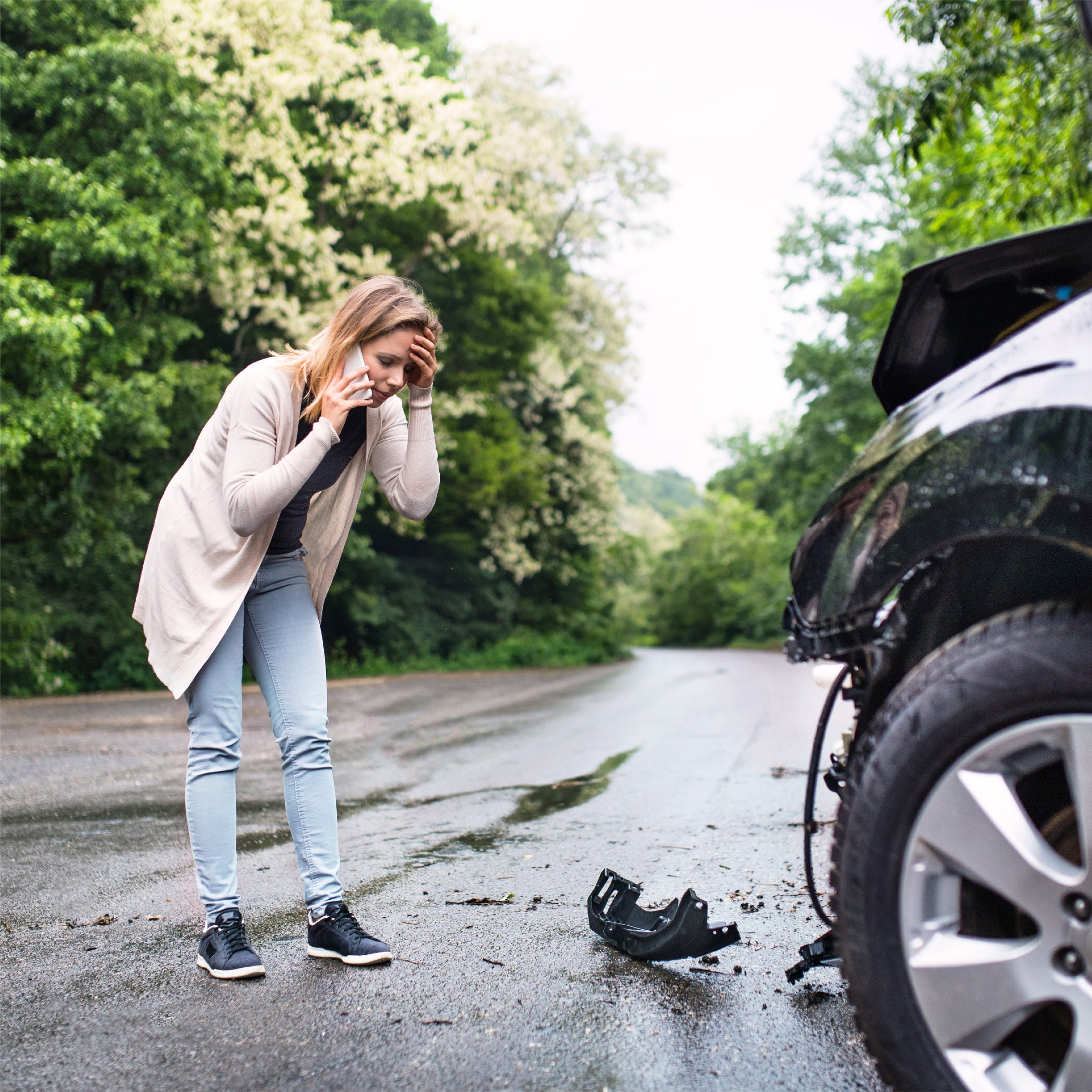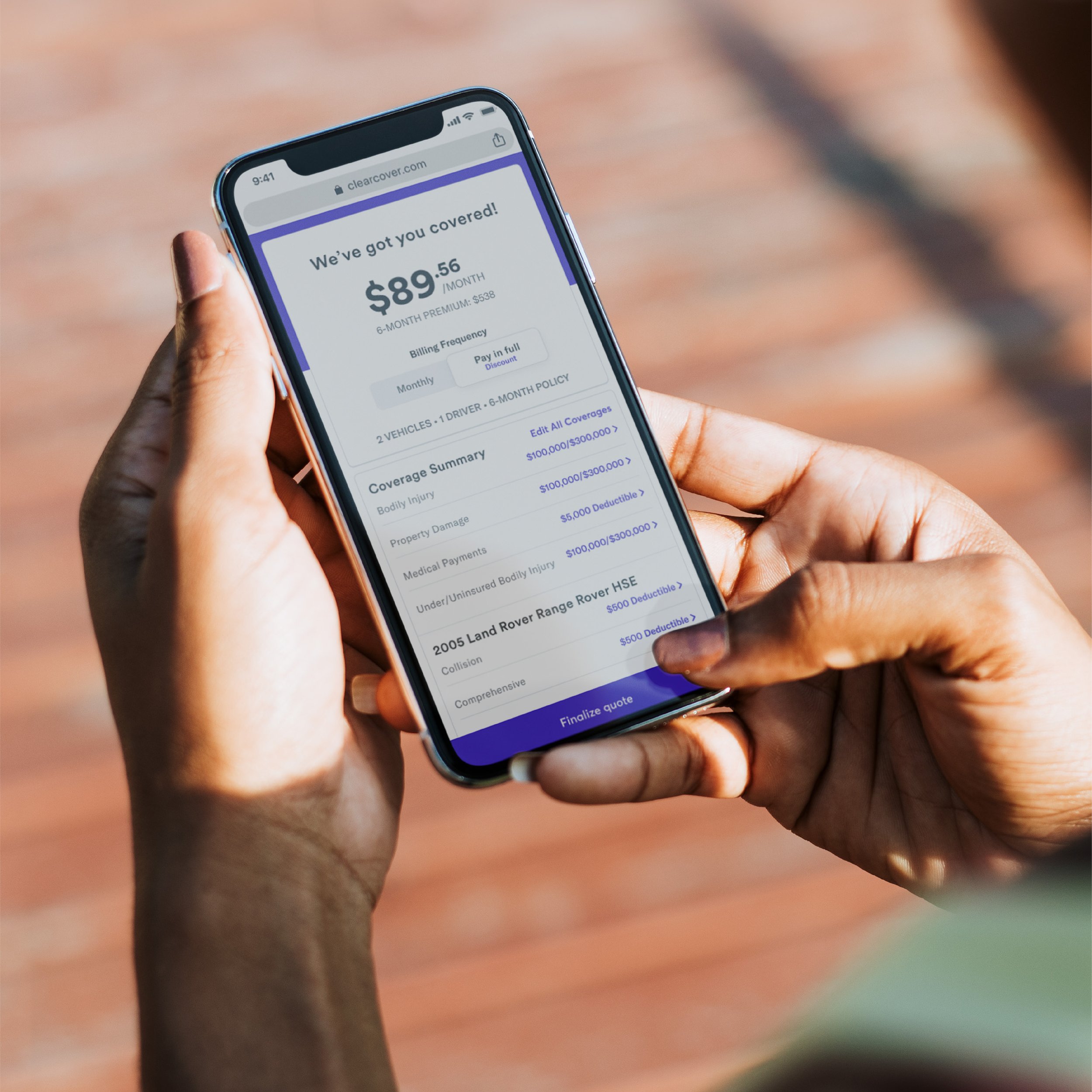10 Safety Tips to Avoid Distracted Driving and Keep You Safe on the Road
Written by Team Clearcover
You don’t need to spend more than a few minutes on the road to see distracted drivers all around you. From drivers who can't seem to stay off their cell phones to those who are a little too into their music, distracted driving is a real safety threat on roads and highways across the nation. In fact, research has found that approximately 660,000 American drivers are using electronic devices while driving at any given moment... Yikes!
And even if you think you're not a distracted driver, the reality is, that everybody gets distracted behind the wheel from time to time. The key is being able to recognize when it's happening so that you can take corrective action and refocus your attention on the road.
Distracted Driving Accidents Are on the Rise
Unfortunately, the amount of distracted driving accidents in the US continues to rise. With more Americans now owning smartphones than ever before, phones are among the most common sources of distraction while driving. In fact, cell phones cause about as many motor vehicle crashes each year as speeding does — and sending or reading a text message while driving makes you eight times more likely to crash.
If that seems shocking, DefensiveDriving.org’s infographic with distracted driving statistics provides a sobering reality check:
If you take your eyes off the road for just five seconds while driving 55 mph, you will have driven the length of an entire football field.
Every day, nine Americans die in distracted driving accidents.
You are as likely to get into an accident from taking a phone call while driving as you are from driving while drunk.
Common Distracted Driving Behaviors
Texting while driving isn't the only cell phone-related distracted driving behavior. Some other common distractions to be aware of include:
Making or answering calls
Reading or sending emails
Talking on a hands-free device
Reading or posting on social media
Browsing the internet
Looking at or posting photos/videos
Video chatting
Watching TV or a movie
And of course, it’s not just cell phone use that can cause driver distraction. Some other unsafe behaviors that can lead to distracted driving include:
Eating behind the wheel
Applying makeup
Listening to loud music
Being distracted by passengers
Driving while drowsy
Searching for items in the car
Adjusting the radio or temperature settings
Entering an address into a navigation system for directions
What Are the Consequences of Distracted Driving?
The potential consequences of distracted driving range from legal and financial to insurance-related and even medical. Obviously, the biggest concern with driving distractions is that they can cause accidents that lead to serious harm. When you drive while distracted, you are not only endangering yourself, but you could also be putting the health and safety of other innocent drivers, passengers, and pedestrians at risk. According to the NHTSA, distracted driving resulted in more than 3,100 fatalities on U.S. roads in 2019 alone.
Even if you aren't physically impacted by a distracted driving accident, you could still face serious legal penalties, fines, and even lawsuits if you are found at fault for causing the accident. Each state has its own specific laws regarding distracted driving and you could be fined hundreds or even thousands of dollars if you're caught driving while distracted. If you have multiple distracted driving charges on your record, your auto insurance company may even consider dropping your coverage.
10 Essential Distracted Driving Safety Tips
The reality is that nobody is a "perfect" driver. We all become distracted at times while driving. However, that doesn't mean we can't be proactive about minimizing distractions to stay safer behind the wheel. So, what are some of the best driving tips to keep in mind?
1. Limit phone usage while on the road. Cell phones are among the most common sources of distracted driving, especially when used to read and/or send texts. The National Safety Council reports that phone use while driving causes about 1.6 million crashes annually. Fortunately, avoiding cell phone distractions is quite simple: Get into the habit of putting your phone out of sight while driving, such as inside your center console or in a purse or bag. If you think you might be tempted to answer phone calls or texts, put your phone in "silent" or "do not disturb" mode until you get to your destination.
2. Don't drive while drowsy. When you're excessively tired behind the wheel, your ability to focus and react is severely impaired. And according to the National Highway Traffic Safety Administration, nearly 700 Americans died as a result of drowsy-driving crashes in 2019. Make sure you're getting enough sleep at night — especially on nights when you know you have to drive the next day. If you take any prescription medications, ask your healthcare provider if drowsiness is a side effect you should be concerned about.
3. Only allow one person per seat. This may seem obvious, but it’s important to make sure you don’t exceed your vehicle’s designated passenger capacity. Not only is driving with too many people in your car unsafe (and may even be illegal, depending on your state), but it also creates the potential for excessive noise or distractions. This tip is especially applicable to new or teen drivers, who may become more easily distracted by their friends in the car.
4. Avoid multitasking. The only thing you should be focused on behind the wheel is driving—everything else can wait. Unfortunately, many drivers become overconfident and think they can safely multitask. In reality, studies find that only about 2.5% of the population can multitask effectively. For the rest of us, multitasking is actually less efficient (and much more dangerous), especially when you try to do it behind the wheel. If there is anything you need to do, be sure to take care of it before you hit the road, or let it wait until you reach your destination.
5. Don't eat while driving. Grabbing a quick bite to eat while driving may not seem like a big deal, but it can actually be a serious distraction. According to a Lytx study, drivers who eat or drink while driving are 3.6 times more likely to be involved in a collision. Not only does eating require at least one (and sometimes two) hands, but it can pull your focus away from the road ahead of you and lead to delayed reaction times. The best way to avoid this behavior? Eat before you get on the road or after you arrive at your destination. If you get hungry while driving and can't wait to eat, swing by a drive-thru—but stay parked and finish your meal before getting back on the road.
6. Secure cargo. Having loose objects in your car can be distracting and potentially dangerous. Not only can loose cargo rolling around the floor or seats can distract you while driving, but it could also become a projectile that could hit you or passengers in your vehicle in an accident. Before you start your car, take a quick look around for any loose items and secure them before you start driving.
7. Adjust your settings before you drive. Set your temperature, adjust your mirrors and seat, and fine-tune all other settings within your vehicle before you head out. Whether your car has a built-in GPS system or you use a navigation app on your phone for directions, entering an address or destination while you're driving requires focused attention and takes your eyes off the road. Take the time to set up your GPS or navigation app before you leave.
8. Get ready before you leave. If you don’t have time to comb your hair before you leave the house, it’s no big deal to just do it on your way while you’re stopped at a red light, right? Actually, grooming while driving can be just as distracting as sending a text or trying to eat a meal behind the wheel. This is because most grooming activities (from brushing your hair to applying makeup) require you to take at least one hand off the wheel (and both eyes off the road). Avoid this common source of distracted driving by getting ready before you get in the car, or waiting until you arrive at your destination to finish up.
9. Keep your eyes on the road. Even if you don’t use your phone, eat, or get ready while driving, there are plenty of other potential distractions begging for your attention on the road. Some typical sources of distraction include billboards, nearby buildings, and other scenery. To stay focused on your more immediate surroundings, get into the habit of scanning your mirrors about every five seconds and then returning your eyes to the road ahead. Keeping your eyes moving is key to defensive driving, which can help keep you safer behind the wheel.
10. Wait until you stop to search for items. Can't find your sunglasses? If you need them while driving, pull over and search your car for them instead of fumbling around to find them while you drive. In the meantime, you can always use your car's built-in sunshade. The same concept applies to any other items you may need to search for while on the road. Not only does fumbling around to look for an item take at least one hand off your steering wheel, but it also pulls your focus away from the road and reduces your response time. In addition to waiting until you stop to search for lost items, take other proactive measures to improve organization in your car so things are less likely to jostle around or be misplaced.
Drive Safer, Get Claims Processed Faster, and Get Back on the Road With Clearcover
Despite many safety campaigns to increase awareness of distracted driving and its severity, the number of distracted driving crashes, injuries, and deaths in America continues to rise each year. By being more aware of the common causes of distracted driving as well as effective ways to prevent and avoid them, you can keep yourself, your passengers, and fellow motorists safer.
Staying safe on the road also requires proper coverage. At Clearcover, we can help you find a policy that suits your needs (and budget). Take control of your coverage and see what you can save today.




